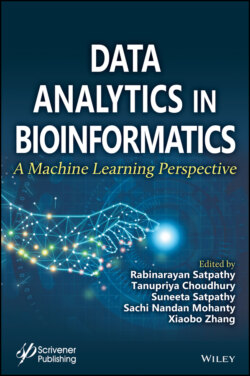Читать книгу Data Analytics in Bioinformatics - Группа авторов - Страница 27
1.8 Support Vector Machines
ОглавлениеThe original Support Vector Machine (SVM) algorithm was invented by Vladimir N. Vapnik & Alexey Ya. Chervonenkis in 1963 [85]. In machine learning, the Support Vector Classifier fits the data that the user provides, and returns the best-fit hyper-plane that categorizes the data. After getting the hyperplane, the user can feed some features to the classifier to check the predicted class [86–87]. SVM is used for analyzing data that can be used for the process of regression or classification. Taking a similar example of the bifurcation of a person suffering from heart disease or not but giving it a more detailed view, it is depicted in Figure 1.16.
In the above figure, there is an illustration of Support Vector Machines that amalgamates the Hyperplane, Support Vectors, Maximum Margins, and Data Points in a single concept and belongs to either a person is suffering from heart disease or not. Support Vectors are the points that are present very close to the hyperplane and it affects the position and orientation. If they are removed then the position and orientation of the hyperplane will be altered and the maximum margin will also get affected [88–90]. The maximum margin is the distance/length between the nearest points to both classes. Here, Class 1 belongs to the person suffering from heart diseases and Class 2 belongs to the persons who are not suffering from heart diseases. After implementing SVM on the heart disease dataset [41] through python (Google Colab), it was observed that the generated AUC values presented in Table 1.7 show that the model performs outstandingly.
Figure 1.16 Support vector machine.
Table 1.7 AUC: Support vector machines.
| Parameter | Data | Value | Result |
| The area under the ROC Curve (AUC) | Training Data | 1.0000000 | Outstanding |
| Test Data | 0.9773333 | Outstanding | |
| Index: 0.5: No Discriminant, 0.6–0.8: Can be considered accepted, 0.8–0.9: Excellent, >0.9: Outstanding |
